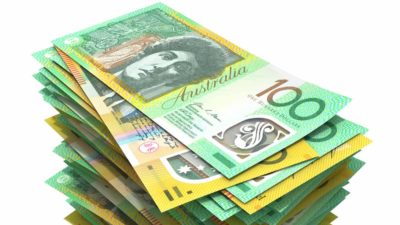Investing is like many things in life – the hardest part can be just getting started! If you're financially organised enough to have some funds to start your investment journey, congratulations! Here are the next steps to building your investment portfolio.
Roadblocks
Fear and uncertainty are two of the biggest roadblocks that prevent people from taking action to realise their plans. If you knew what the outcome of a decision would be, you would know how to make the decision. But we don't know what the future holds.
Investing can be confusing – there are so many options to consider – shares, options, exchange-traded funds (ETFs), bonds…the list goes on. We all want to make optimal choices about how to invest our money. The key is to understand your goals, understand your options and match the two appropriately.
When we buy a share, we are essentially taking a gamble on the future profitability of a company. We can't know ahead of time what this will be. What we can do is thoroughly research the company, its market, and the prevailing economic forces to make an informed decision. Then, we can monitor the progress of our investments and any changes in their operating environments.
Goals and time frames
Share prices fluctuate on a daily basis. Individual share prices react to company-specific factors as well as economy-wide factors. The market as a whole can be volatile. Over time, however, higher risk shares tend to outperform lower risk asset classes such as bonds. Over the last 100 years, ASX shares have, on average, provided a real return (after inflation) of 6%.
Naturally, there have been times when shares have returned less than than 'risk-free' assets. During the GFC (global financial crisis) the S&P/ASX 200 (ASX: XJO) fell more than 53%. This is one of the reasons why investors in ASX shares should have a time horizon of at least around 5 years. Equities are typically a longer-term investment as time helps to mitigate short-term risk and smooth out fluctuations in price and performance. If you're going to need your capital in the next couple of years, you may be better off choosing a lower risk option like a term deposit.
Diversification
The price of individual ASX shares moves daily (sometimes dramatically) and often without much notice. But not all ASX share prices move the same way at the same time. By spreading your money across a variety of shares, your overall return will be less volatile. This is known as diversification. Diversifying involves building a portfolio of multiple holdings across different industries and sectors.
A diversified portfolio will be less exposed to the impact of events affecting a particular company or industry. This leaves the portfolio holder less exposed – if a particular business or sector isn't performing well, you won't lose all your money. Some companies in your portfolio may perform better than others, improving overall returns.
Diversification can occur not just across the share market, but across asset classes. ASX shares are an obvious place to start an investment portfolio, but there are also international shares, government and corporate bonds, and property. The returns on these asset classes are not perfectly correlated so holding a basket of them reduces the overall risk of your portfolio.
Investments
So where to invest your $5,000? This will depend on what you're trying to achieve. If you're looking for long-term capital growth, you may want to consider high growth companies such as Appen Ltd (ASX: APX) and Afterpay Ltd (ASX: APT). If you're looking to generate income, you will instead look to ASX shares with a track record of paying dividends like Fortescue Metals Group Limited (ASX: FMG) or AGL Energy Limited (ASX: AGL).
To achieve maximum market exposure and sufficient diversification, including some ETFs could be a good option. ETFs are funds which are traded on the stock exchange like ordinary shares. The funds hold assets such as shares, bonds, commodities, or other investments. Because ETFs hold multiple assets and usually charge low management fees, they are a popular choice for diversification.
The Betashares Australia 200 ETF (ASX: A200) provides exposure to the largest 200 companies listed on the ASX based on market capitalisation. The S&P/ASX 200 (ASX: XJO) changes quarterly as companies' market capitalisations rise and fall. In the most recent quarterly update, Mesoblast Limited (ASX: MSB), Megaport Ltd (ASX: MP1), Omni Bridgeway Ltd (ASX: OBL), and Perseus Mining Limited (ASX: PRU) joined the index. Estia Health Ltd (ASX: EHE), Jumbo Interactive Ltd (ASX: JIN), Mayne Pharma Group Ltd (ASX: MYX), and Pilbara Minerals Ltd (ASX: PLS) were removed.
ASX shares you use
Investors can also find it useful to invest in companies that they are actually a customer of. After all, if you think a company provides a good product or service, others probably will too. Becoming a shareholder in these companies means you stand to receive a portion of the money you spend with a company back in the form of dividends.
For example, do you shop at Coles Group Ltd (ASX: COL) or Woolworths Group Ltd (ASX: WOW)? Do you buy online at Kogan.com Ltd (ASX: KGN) or Temple & Webster Group Ltd (ASX: TPW)? Do you use buy now, pay later services like those offered by Afterpay or Splitit Ltd (ASX: SPT)? If so, it may be worth investigating the investment potential of these companies.
International shares
To mix things up a bit, it can be worth adding some international exposure to your portfolio. The VanEck Vectors MSCI World ex Australia Quality ETF (ASX: QUAL) provides exposure to some of the largest listed companies in the world outside of Australia. The fund provides access to 300 international shares in a single trade. Top holdings include Apple Inc, Microsoft Corp, Facebook Inc, Visa Inc, Johnson & Johnson, Alphabet Inc, MasterCard Inc, Procter & Gamble Inc, and Roche Holding AG.
Foolish takeaway
Deciding how much of your $5,000 to invest in each option will depend on your risk profile and investment goals. If you are comfortable with more risk, you may devote more funds to growth shares. If you are more risk averse, a more conservative portfolio may be appropriate.








